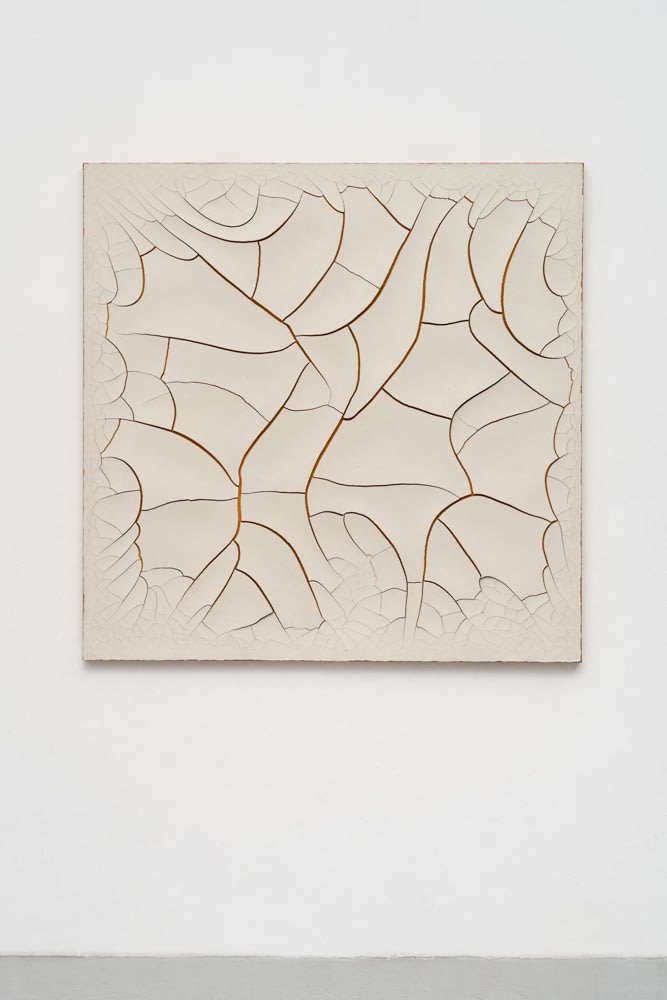 Photo: Edouard Fraipont
Photo: Edouard Fraipont
 Photo: Edouard Fraipont
Photo: Edouard Fraipont
 Photo: Edouard Fraipont
Photo: Edouard Fraipont
 Photo: Edouard Fraipont
Photo: Edouard Fraipont
 Photo: Edouard Fraipont
Photo: Edouard Fraipont
Adriana Varejão
Further images
[EN]
Like the cracked glass in a porcelain vase or the veins in leaves, the network of cracks on the surface of Adriana Varejão's Monocromo Cru #2 (2010) has a seismic character in its relationship with the viewer. Playing with the boundaries between painting and sculpture, the artist's work incorporates a cracking by painting a thick, viscous layer of plaster, allowing deep, singular and dynamic cracks to form. The deliberate desiccation of the plaster reveals the oil painting behind the plaster, where a yellow-turmeric background contrasts with the white of the plaster.
Varejão was inspired by tiles, a traditional Portuguese ceramic used in national art since the Middle Ages, introduced to Brazil by the Dutch, who in turn learned the technique from the Chinese. The artist skillfully maneuvers her system of wide-ranging references, grounding the work in its surface and materiality, using the loaded cracks to transform what normally constitutes a ceramic error or a deviation in the process into the invoice of a ceramic piece.
[PT]
Como o vidro rachado em um vaso de porcelana ou como os veios das folhas, a rede de fissuras na superfície de Monocromo Cru #2 (2010) de Adriana Varejão possuí um caráter sísmico em sua relação com o espectador. Jogando com os limites entre a pintura e a escultura, a obra da artista incorpora um craquelê por meio da pintura de uma camada grossa e viscosa de gesso, permitindo a formação de rachaduras profundas, singulares e dinâmicas. A dessecação deliberada do gesso desvela a pintura em óleo por trás do gesso, onde se mostra um fundo amarelo-turmérico que contrasta com o branco do gesso.
Varejão se inspirou no azulejo, uma cerâmica tradicional portuguesa usada na arte nacional desde a Idade Média, introduzida no Brasil pelos holandeses, que, por sua vez, aprenderam a técnica com os chineses. A artista manobra habilmente seu sistema de referências abrangentes, fundamentando o trabalho em sua superfície e materialidade, usando as rachaduras carregadas para transformar o que normalmente constitui um erro em cerâmica ou um desvio no processo na fatura de uma peça de cerâmica.
Assine a nossa newsletter
* denota campos obrigatórios
We will process the personal data you have supplied in accordance with our privacy policy (available on request). You can unsubscribe or change your preferences at any time by clicking the link in our emails.




